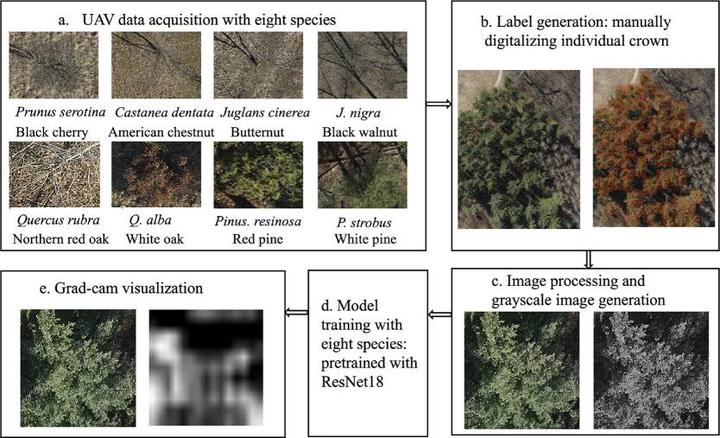 Algorithm
AlgorithmAbstract
Tree species classification using unmanned aerial vehicle (UAV) images has gained increasing attention due to recent advancements in deep learning algorithms and UAV technology. Recent studies have primarily focused on the use of UAV images captured during the growing seasons. Despite the fact that winter is a critical and convenient period for forest inventory, limited studies have explored the application of winter images for species classification. By training a deep learning model (ResNet18), we achieved an average F1-score of 0.9 for classification among eight species using winter UAV images in a temperate forest. To enhance model interpretability, we applied the Grad-CAM method, which generated feature maps identifying critical regions for species classification. To examine the impact of color on species classification, we converted RGB images to grayscale. Model accuracy on grayscale images decreased slightly (F1-score 0.86) but it effectively learned features from canopy images. This study contributes to the field by pioneering the use of winter images for tree species classification in temperate forests, which provides new opportunities for year-round UAV-based forest inventory. Given winter provides the opportunity to inventory other under-canopy features such as trunk diameter, adding the capability of species classification with winter images could greatly improve the capacity and efficiency of UAV-based forest inventory.